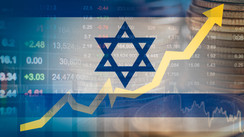An Insight into Exchange-Traded Funds (ETFs)
An Exchange-Traded Fund (ETF) is a well-diversified investment tool that operates akin to a mutual fund but trades like a regular stock on an exchange. This pooled security can be tailored to track a wide spectrum of assets, ranging from a singular commodity to a comprehensive blend of securities. Moreover, it can adhere to distinct investment strategies.
The SPDR S&P 500 ETF (SPY) pioneered the ETF domain. This fund mirrors the S&P 500 Index and continues to be an actively traded ETF.
ETFs enjoy the moniker of exchange-traded funds as their trading activity mirrors that of stocks on an exchange. Unlike mutual funds, the price of an ETF fluctuates throughout the day in response to buying and selling pressure. Furthermore, ETFs are typically more cost-efficient and liquid than their mutual fund counterparts.
Investing in leading ETFs offers an economical route to diversify investment portfolios across multiple asset classes. Among the top-performing ETFs for July are BKCH, FEMB, PFFR, UNG, and FXC, fueled by surges in Bitcoin and energy prices.
Exploring the Wide Array of ETF Types
The ETF market is ripe with diverse offerings aimed at income generation, speculation, price escalation, and risk hedging. Here's a glimpse into the myriad of ETFs available today:
Passive and Active ETFs
ETFs are predominantly categorized as either passive or active. Passive ETFs strive to mimic the performance of a broad index, be it a diversified index like the S&P 500 or a more targeted sector or trend. Conversely, actively managed ETFs are tailored by portfolio managers who cherry-pick the securities to be included. These funds offer advantages over passive ETFs but often carry higher costs.
Bond ETFs
Bond ETFs cater to investors seeking regular income, with their income distribution hinging on the performance of the underlying bonds. These ETFs trade at a premium or discount from the actual bond price, with no maturity date.
Stock ETFs
Stock ETFs encompass a mix of stocks from a specific industry or sector. These ETFs aim to offer a diversified exposure to a particular industry, with lower fees than stock mutual funds and without the need to own the securities.
Industry/Sector ETFs
Industry or sector ETFs focus on a distinct sector or industry, aiming to capture the growth potential of the sector while also limiting the downside risk.
Commodity ETFs
Commodity ETFs invest in commodities, offering several benefits including portfolio diversification, hedging against market downturns, and being a cost-effective alternative to holding the physical commodity.
Currency ETFs
Currency ETFs track the performance of currency pairs, used for speculation, diversification, and hedging against forex market volatility and inflation.
Inverse ETFs
Inverse ETFs capitalize on stock declines by shorting stocks. They are essentially bets on a market downturn.
Leveraged ETFs
Leveraged ETFs seek to return multiples on the return of the underlying investments. They employ derivatives to leverage their returns.
Benefits of Investing in ETFs
Investing in ETFs offers several advantages:
-
Diversification: ETFs grant investors access to a wide variety of asset classes and market segments, which can help to spread risk.
-
Flexibility: Unlike mutual funds, which are only bought or sold at the end of the day at the net asset value price, ETFs can be traded throughout the day like stocks.
-
Low Costs: ETFs typically have lower expense ratios than mutual funds, making them a cost-effective choice for many investors.
-
Transparency: ETFs disclose their holdings on a daily basis, providing investors with a clear view of where their money is invested.
-
Investment Strategies: From passive investing to hedging strategies, ETFs can suit a range of investment goals and risk tolerances.
Understanding the Risks of ETF Investing
While ETFs offer numerous benefits, they are not devoid of risks:
-
Market Risk: Like any investment, ETFs are susceptible to the fluctuations of the market. The value of an ETF can decrease based on the performance of the underlying asset(s).
-
Liquidity Risk: Some ETFs, particularly those tracking narrow sectors or less popular indexes, may have low trading volumes, making them harder to buy or sell without impacting the price.
-
Tracking Error: There can be a difference (known as a tracking error) between the performance of an ETF and the index or commodity it's designed to follow. This discrepancy can be due to fund expenses, imperfect replication methods, or other factors.
-
Leverage Risk: Leveraged and inverse ETFs can amplify losses as well as gains. These ETFs are complex financial instruments that should be used with caution.
Spotlight on Equity ETF: Global X Blockchain ETF (BKCH)
- 1-Month Performance: 16.58%
- Expense Ratio: 0.5%
- Annual Dividend Yield: 0.65%
- 30-Day Average Daily Volume: 124,007
- Assets Under Management: $79.46 million
- Inception Date: July 12, 2021
- Issuer: Mirae Asset Global Investments Co., Ltd.1
The Global X Blockchain ETF (BKCH) traces the Solactive Blockchain Index. This index is a composite of international corporations engaged in blockchain tech, including digital asset mining, blockchain applications, and digital asset transactions. Majority sector holdings lie in technology and finance, accounting for 51.3% and 27.41% respectively.
Marquee holdings comprise Marathon Digital Holdings Inc. (MARA), a digital asset mining entity; Coinbase Global Inc. (COIN), the largest crypto exchange in the U.S.; and Hut 8 Mining Corp. (HUT), a crypto mining company based in Canada. Despite not holding digital currencies directly, the fund's performance has seen a positive effect from Bitcoin’s 8% rally over the last month.
Top-Performing Bond ETF: First Trust Emerging Markets Local Currency Bond ETF (FEMB)
- 1-Month Performance: 5.01%
- Expense Ratio: 0.85%
- Annual Dividend Yield: 5.71%
- 30-Day Average Daily Volume: 71,770
- Assets Under Management: $134.41 million
- Inception Date: Nov. 4, 2014
- Issuer: First Trust
The First Trust Emerging Markets Local Currency Bond ETF (FEMB) assigns a minimum of 80% of its net assets to bonds, notes, and bills. These are issued or guaranteed by emerging market countries and denominated in local currency, making currency exchange rates a significant influence on the fund’s total return.
The ETF embraces bonds of varying maturity and credit quality, even including unrated securities. Countries with double-digit exposure in the ETF's portfolio encompass Indonesia (15.17%), Brazil (12.47%), Malaysia (11.08%), and South Africa (10.89%).
Leading Fixed Income ETF: InfraCap REIT Preferred ETF (PFFR)
- 1-Month Performance: 5.85%
- Expense Ratio: 0.45%
- Annual Dividend Yield: 8.57%
- 30-Day Average Daily Volume: 15,421
- Assets Under Management: $59.59 million
- Inception Date: Feb. 7, 2017
- Issuer: Virtus Investment Partners
The InfraCap REIT Preferred ETF (PFFR) mirrors the Indxx REIT Preferred Stock Index, an index made up of preferred securities issued by U.S.-listed real estate investment trusts (REITs). The fund, undergoing semiannual rebalancing, solely picks securities yielding 3% or more and caps any single issue to a 10% weighting.
Prominent holdings in the ETF's portfolio include mortgage manager Annaly Capital Management Inc. (NLY), data center operator Digital Realty Trust Inc. (DLR), and broadband service provider Digital Bridge Communications Corp.
Best-Performing Commodities ETF: United States Natural Gas Fund, LP (UNG)
- One Month Performance: 15.96%
- Expense Ratio: 1.11%
- Annual Dividend Yield: N/A
- 30-Day Average Daily Volume: 17,663,625
- Assets Under Management: $1.20 billion
- Inception Date: April 18, 2007
- Issuer: Marygold
The United States Natural Gas Fund, LP (UNG) provides investors a share in front-month natural gas futures, tracking the movements of natural gas prices in percentage terms. If the near-month contract is within two weeks of expiration, the fund shifts its investment to the following month’s contract.
The ETF mainly holds natural gas futures listed on the New York Mercantile Exchange (NYMEX), and it may also invest in forwards and swap contracts. It has seen a surge in the past month amid data showing that natural gas inventories have climbed slower than anticipated.
Top Currency ETF: Invesco CurrencyShares Canadian Dollar Trust (FXC)
- One Month Performance: 3.66%
- Expense Ratio: 0.4%
- Annual Dividend Yield: 1.06%
- 30-Day Average Daily Volume: 35,424
- Assets Under Management: $92.88 million
- Inception Date: June 21, 2006
- Issuer: Invesco
The Invesco CurrencyShares Canadian Dollar Trust (FXC) gives direct exposure to the Canadian dollar (CAD), holding physical currency in a JPMorgan deposit account. This allows investors to hold the Loonie without needing to open a foreign exchange account. The fund does carry credit risk as it has no deposit insurance on its holdings.
The ETF caught investors' attention following an unexpected rate hike in early June from the Bank of Canada in its efforts to curb inflation.
In conclusion, ETFs are a potent tool for investors, offering a balance of risk and reward. It is vital to understand the mechanics and risks associated with ETFs to effectively leverage them in your portfolio. As with all investments, it is recommended to seek professional advice or perform thorough research before investing in ETFs.





